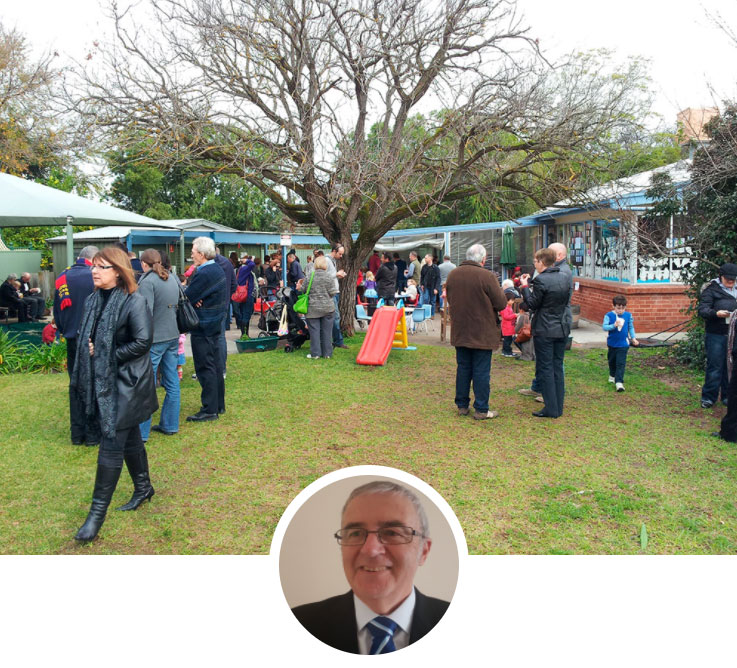Below is an extract from Today’s Advertiser and it is timely given the thoughts expressed recentlyty by Bob Such recently. I ask the citizens of Unley do they want the Such solution or do they see what is being suggested below as a future we might want to pursue?
Ref:
IT’S TIME ROADS SPOKE
HE DAYS OF CARS ASSUMING PRIORITY ON ALL
OF ADELAIDE’S STREETS MUST COME TO AN END,
SAYS TRANSPORT STRATEGIST NATALYA BOUJENKO
WORDS [‘AVIV VALENTE
Pick
a section of road anywhere
in the metropolitan area
from
a quiet suburban backstreet to
the heart of the CBD or furious
traffic flow of Main South Road.
Each of those environments and
any number of others along the length
of the scale
vastly different purposes and priorities.
But have they been? Chances are they
should be designed with
have all been laid down according to a
predictable and inflexible pecking order,
with the motor vehicle at the head of
the table and everybody else left to pick
at the scraps that fall on the floor.
From so many points of view
social,
environmental, commercial, recreational
removing primacy of place of the car
from some situations and promoting
cyclists, pedestrians and public
transport brings tremendous benefits.
So how do we do it?
According to Adelaide-based civil
and environmental engineer Natalya
Boujenko (pictured), such changes are
already being implemented both here
and overseas, but with little fanfare.
“There’s a growing school of thought
that priorities change depending
on where you are on the transport
network,” Natalya says, “and I
think it’s a very strong paradigm to
embrace in street design.
“No matter where you are in Adelaide
now, the priorities are very similar: the
car starts at the top of the hierarchy
and then you move down to commercial
vehicles, buses, then cyclists and
pedestrians
all subservient to cars.”
But Natalya says things are changing.
“What we’re learning is that there are
some very important places in the city
where the priorities are different and
the pedestrian has to be on top.”
North Terrace is a prime example of
what is good and bad about Adelaide’s
approach to street design. The street’s
redevelopment, Natalya says, is
beautiful and attracts people to the
area to enjoy the spaces and grass in
front of the museum and art gallery.
But the road itself is still focused
on channelling large volumes of traffic,
which “prevents it from being an inviting
and socially active boulevard”, she says.
“This is an example of this city having
-1–i
118309328
Brief: UNLEY_SA
Copyright Agency Ltd (CAL) licenced copy
Adelaide Advertiser
Friday 7/10/2011
Page: 18
Section: Supplements
Region: Adelaide Circulation: 188,117
Type: Capital City Daily
Size: 596.83 sq.cms.
Frequency: MTWTFSPage
1 of 2
Ref:
similar road-user hierarchy irrespective
of where you are. On North Terrace,
we’re maximising traffic capacity then
accommodating everyone else around it.
“But the Adelaide City Council and
Integrated Design Strategy are working
on an integrated movement strategy as
part of the IDS to redress that.”
Cycling becomes a crucial factor in any
development of sustainable transport
plans. Not because it is more important
than other modes of transport, just
because as opposed to previous
thinking it is no less important.
The trick, says Natalya, is to cater
for all needs by avoiding conflict
between different vehicle types.
“In Adelaide, the conflict lies with
the speed and the difference in the
speed between the moving car traffic
and the cyclists. To make the cycling
environment safer in the city, that
speed difference needs to be looked at.”
Natalya has worked around the
world and has seen examples of traffic
changes
derided at the time that
have proved hugely successful.
“High Street, Kensington, in London
was redesigned in 2003. Everyone said
it wouldn’t work because it reduced the
traffic capacity to improve the conditions
for cyclists and pedestrians, but it works
and it’s quite pretty,” she says.
Get our priorities right, and Adelaide
too could have a bike-friendly future.
cfo
A Brisbane University team created the Vampire
Index (vulnerability assessmentfor mortgage,
petroleum and inflation risks and expenses). Red
areas are hardest hit by fuel and mortgage cost rises
“Building on greenfields and fringes is not the only
answer,” says Natalya. ‘We need to make densification
viable and acceptable by getting the design right”
118309328
Brief: UNLEY_SA
Copyright Agency Ltd (CAL) licenced copy
Adelaide Advertiser
Friday 7/10/2011
Page: 18
Section: Supplements
Region: Adelaide Circulation: 188,117
Type: Capital City Daily
Size: 596.83 sq.cms.
Frequency: MTWTFSPage
2 of 2

Don
Thank you for this information.
It’s quite timely.
We need fewer cars on our roads and we need obstacles to reduce the cars and that is why I support the closure of Kelvin Avenue.
Please pursue the closure of Kelvin Avenue.
Thanks
I disagree with Brooke on closing Kelvin Avenue.
It must be kept en.
Kelvin Avenue must be kept open.
I won’t support an move to close it.
Our family has 5 cars and rely to access via Kelvin Avenue.
I don’t want be penalized because we are a motoring family.
The lateset proposal, responding to concerns about road closures, was sent to nearby residents on Thursday. I would love to hearwhat you think about the “driveway link” that is now proposed.